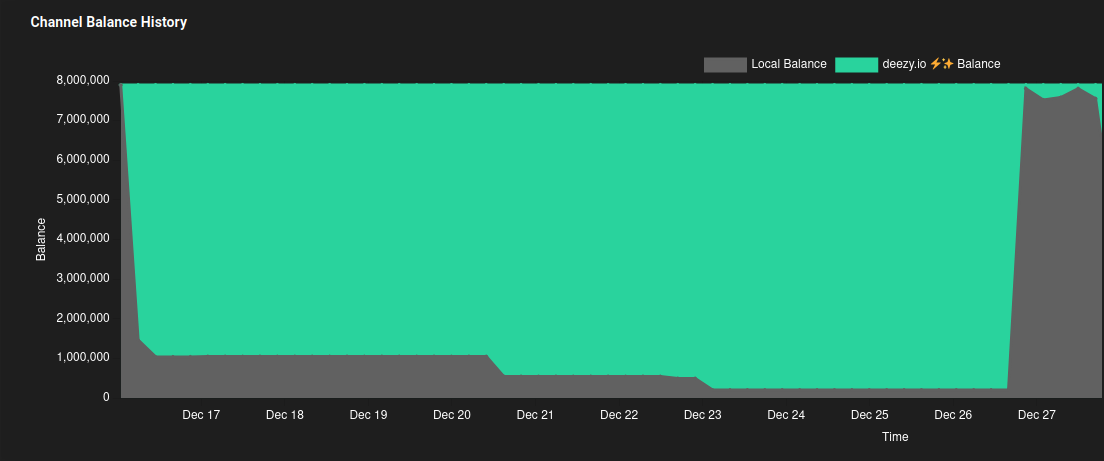Introducing LiquidOps
Liquidity management tool from bolt.observer
Anyone who runs a node, especially if you use it for anything more than just private payments, will agree that proper node management is not a trivial task. We have talked about the role of observability before in our Observability in lightning network blog post and presentation at Adopting bitcoin.
What we would like to do today is tell you a bit more about a new product we released in beta at Adopting Bitcoin last year - LiquidOps.
What LiquidOps enables you to do right now is to monitor liquidity in your channels and configure advance alerting options for various scenarios as your needs vary depending on what your business is, for example:
If you’re a merchant you generally mostly care about inbound liquidity so people can pay you for goods and services
If you’re an LSP or a routing node you need to have good overall liquidity on both sides so you can route payments
By bringing more visibility to your liquidity and its historical movements, you can see the trends and with that improve your operations, predict future problems and optimize your capital deployment.
There are many reasons for payments to fail - from hardware node failure your node, lack of liquidity, problems with your peers, or failures somewhere along the route. Observing what is happening with your payments carefully and reacting to it before it becomes visible to your users can significantly improve user experience and reliability. For example, if you see that your successful payments now take more attempted routes than they historically did that could indicate that your neighbors have problems with liquidity and your future success rates may drop, thus impacting your service and its users. By being aware of that early you can mitigate this by opening new channels.
What we are building with LiquidOps is a smart platform where you can define how your node should be behaving based on your business rules and with it ensure that you can focus on building your business and not just operating your nodes.
Currently, LiquidOps offers you several ways to improve your node operations, mainly (for now) by adding extra visibility and automating your monitoring.
You can for example:
monitoring the balance of your channels and getting configurable alerts on what you want do to, for example:
at 15% outbound left, message the team on slack so they are aware of it
at 10% inbound left, trigger a webhook that tries to rebalance the channel
if it falls below 10% trigger do a swap on boltz to ensure business continuity
monitor the status of your important channels and be notified if they become disabled or closed
see historical charts of liquidity movements in your channels
get alerted on the overall liquidity state of your node, how much inbound or outbound you have, for example, you're a merchant with several inbound channels and you primarily care that you have enough inbound so your clients can pay you, and when that is drained you either try to swap/rebalance, or just purchase a new inbound channel
With the current feature set of LiquidOps, we are expanding the monitoring capabilities of our platform, from reachability of nodes and data exploration to your node's liquidity. However, this is only the beginning. At the moment we offer lots of integrations in terms of chat platforms, incident and monitoring solutions, and simple things like email. To see what are all the integrations we are currently supporting see our integrations documentation.
What is coming next is integrations with existing platforms for swaps, purchasing liquidity from marketplaces, automatic rebalancing, and much more. All are based on your desired rules and tailored to your specific use case or concerns. Our goal is to automate away the complexity of node management and enable you to forget that lightning network liquidity was once something you had to pay attention to.
LiquidOps is currently in beta and free to test for everyone - just visit our site and register. For more information about our platform check documentation.
We are looking for feedback from our beta users - reach out to us over twitter, telegram or email.




